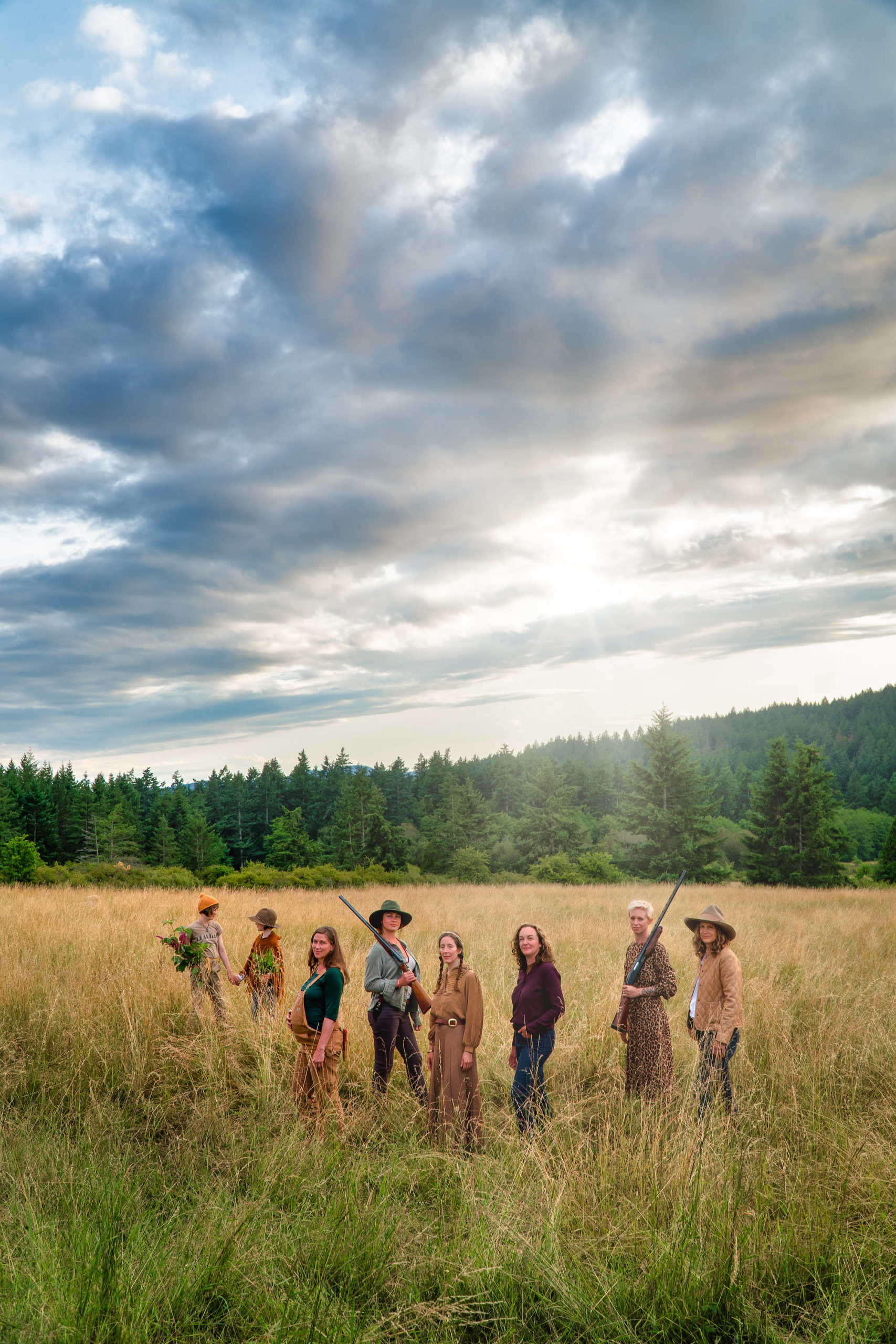It had been a year in the making when locals Ayn Carrillo Gailey and Sara Cunningham Farish sat down to create page layouts and make final edits to the first book in their literary art project titled “Ode.” It was Thanksgiving Day when they left dinner early to drive to Vancouver, BC for a press check.
Since autumn 2018, the duo had collaborated with Orcas locals and long-time visiting photographers, poets, illustrators, fiction writers, painters, ceramicists, dancers, woodworkers, huntresses, and community organizers to tell stories about the power of Orcas Island.
“During the process, for one reason or another, we found ourselves asking ‘why do people want to come here to die? Why here? What is the power of this place?’ We started to notice how the place lured the people and then the people stayed,” Gailey said.
This is true, it becomes clear, as the book — all 144 pages printed on carbon neutral, “forest friendly” matte paper — opens with a tale called “Lured by the Sea” — an illustrative story by Toby Cooper about how Orcas contoured generations of the Loney family much the same way a tide contours a beach.
And the book continues in this way with stories of place as a muse. Gailey says, “Once our theme was apparent — the power of place — we could really start to drive the narrative and include images and a color palette that fit. We could’ve put a beautiful sunny photo or an orca whale on the cover, but it was the balance of dark and light here that became really intriguing to me.”
Gailey spent much of her own time writing pieces for the book, including her own tale about getting lost and giving in to the seduction of the island — what Corbin LaMont calls “the ferry feeling:” a shared feeling we’ve all had. She learned about the history of the color purple from painter Martha Farish and about island artistry and quiet rituals from Ayame Bullock. And it was her writing workshop, the ‘Novel Lab,’ that connected her to local writers who ended up contributing to the book, like Jill McCabe Johnson, Theresa Marl and Cooper.
“The stories are personal and intimate. It’s less about the things that tourists might enjoy. It’s about what people who live here go through. I love when Toby Cooper says in one of his stories that ‘this isn’t our land, we’re borrowing it,’” Gailey said, later adding, “Initially we didn’t tell any [of the writers or photographers] what the theme of the book was, because we didn’t have one. We simply asked, ‘will you write about a treehouse? Will you write about the Aproximada?’”
Cooper, a local community organizer and septuagenarian who recently discovered his eloquent knack for writing, wrote another short story in the book aptly named “The Power of Place.” In 1984, when local photographer Peter Fisher heard Madrona Point was going to be developed, he picked up his camera and went to document the sacred place the Lummi call Ts’el-xwi-sen’. What he captured was powerful enough to use as part of the fundraising campaign to preserve Madrona Point and transfer the land back to the Lummi tribe.
Sara Farish, who had never designed a book before, spent hours crafting what Paul Huber — the design consultant on the project — calls “a very accommodating structure that is the glue that holds it all together and makes for a reading experience that has an unpredictable rhythm and flow.” Indeed, one thing was clear from the onset: Farish and Gailey wanted the book to be deeply intentional.
In addition to fact-checking everything for historical and contextual accuracy, they shared the layout of every page with each featured artist for approval. Gailey was surprised when she received a reply from a poet refusing to have her words printed next to the chosen photograph, but she thought it must be a sign.
“We had to work around some personal histories between artists,” Gailey said, noting of which she’d previously been unaware. “But in the end everyone thought that the artistic vision was more important than anything personal.”
Farish and Gailey have come a long way since the idea for a website with “the rich ethos of the island we love” was born. With their first book published and available online and on shelves at Darvill’s, the team looks ahead. The next volume of “Ode,” Gailey says, will be about love.
“It’ll be an exploration of love around the world through the eyes of the top researchers in the field of love and sex, some of whom live on Orcas Island, with some personal love stories added in as well. When we did the simple snapshots of locals in Eastsound for the first book, we were so inspired by Frank and Jan Loudin’s love story. We certainly hope to include it.”




